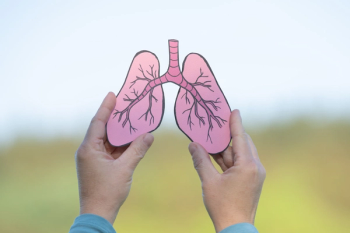
- July 2023
- Volume 89
- Issue 7
Avoid Errors by Checking Patients’ Medications Lists
Inaccurate information, miscommunication during transition points can have dire consequences.
Medication errors resuling from inaccurate medication lists are frequently seen by the Institute for Safe Medication Practices and the Emergency Care Research Institute (ECRI). In fact, these errors were No. 9 in ECRI’s Top 10 Patient Safety Concerns for 2023.1 If you have not already taken action to reduce the risk of this type of error, give it attention and priority now.
THE ISSUE
Miscommunication and lack of data about prescribed and discontinued medications commonly occur during vulnerable transition points in the continuum of care (eg, hospital admission, transfers between care settings, discharge). If a patient’s medication list is inaccurate, the patient may receive an incorrect medication or dose, receive a medication too soon or too late if the time of their last dose is inaccurate, receive inappropriate or duplicate therapies, or not receive a critical medication.
According to the Institute for Healthcare Improvement, data have shown that poor communication of medical information at transition points is responsible for as many as 50% of all medication errors and up to 20% of adverse drug events in hospitals.2 This is precisely why The Joint Commission has focused attention on reducing the risk of errors during transitions of care through the use of the medication reconciliation process.3
SAFE PRACTICE RECOMMENDATIONS
Educate staff and dedicate resources to facilitate accurate medication reconciliation. Multidisciplinary medication reconciliation teams should review current processes, identify gaps and opportunities for improvement, and lead process design and redesign within the organization by implementing the following recommendations.
ADMISSION
Have practitioners approach admission medication reconciliation as a 3-step process:
- Verify. Obtain the most accurate medication list possible upon admission before the first dose of medication is administered (except in emergency or urgent situations). Incorporate prompts in the electronic health record (EHR) for staff to ask about allergies, prescription and OTC medications (including herbals and dietary supplements), and nonenteral medications (eg, patches, eye and ear drops, topical and inhaled medications, injectables, infusions). List the drug name, dosage, route, frequency (including time of administration), indication, and time of the last dose. Sources of information may include visual inspection of the medications brought into the facility by the patient or family, previous medical records, the patient’s pharmacy and prescriber’s office, or online prescription data. Ask the patient or their family/caregiver to validate an accurate list of current medications as well as the patient’s adherence to their medication regimen.
- Clarify. After documenting themedication list in the EHR, ensure the medication and doses are the correct therapy for that patient, given the patient’s current state ofhealth, or seek clarification.
- Reconcile. Designate a provider tocompare the prescribed admission medications with those on the medication history list and resolve any discrepancies. Document any modifications made to the current therapy upon admission, including each change in the level of care, and at discharge to promote a continuum of safe medication use.
TRANSFER
- Each time a patient transfers fromone level of care or setting to another (eg, critical care to medical/surgical, operating room to medical/surgical), review previous medication orders alongside new and discontinued orders, as well as the plan of care, and resolve any discrepancies.
DISCHARGE
- Prior to discharge, designate a provider to reconcile the patient’s list of admission medications against the discharge orders along with the most recent medication administration record. Any differences must be resolved before discharge.
- Provide the patient with an updated medication list and communicate which medications they are to continue taking and those they should stop taking, and discuss any new medications for them to start taking. Educate patients on each medication’s indication, how they should take it, and common adverse effects.
- Send a complete list of the patient’s medications to the next service provider when discharging the patient or transferring them to another level of care within the organization or to another care setting outside the facility. If the patientis going home, send the list directly to the patient’s primary care provider, if possible.
- Educate patients on the importance of maintaining and carrying a complete and up-to-date medication list. Encourage them to share the list during all health care encounters, including at the prescriber’s office, pharmacies, and during any hospitalizations.
References
- Emergency Care Research Institute. Special Report: Top 10 Patient Safety Concerns 2023. March 2023. Accessed June 1, 2023. https://assets.ecri.org/PDF/White-Papers-and-Reports/Top_10_Patient_Safety_Concerns_2023_Special%20Report.pdf
- Improvement stories: accuracy at every step: the challenge of medication reconciliation. Institute for Healthcare Improvement. Accessed June 1, 2023. https://www.ihi.org/resources/Pages/ImprovementStories/AccuracyatEveryStep.aspx
- The Joint Commission. National Patient Safety Goals Effective January 2023 for the Hospital Program. October 27, 2022. Accessed June 1, 2023. https://www.jointcommission.org/-/media/tjc/documents/standards/national-patient-safe-ty-goals/2023/npsg_chapter_hap_jan2023.pdf
Articles in this issue
over 2 years ago
Brain Health Watchover 2 years ago
Pet Peeves — Brought To You By The Sassy Pharmacistover 2 years ago
Interactive Case Studiesover 2 years ago
Postnasal Dripover 2 years ago
Expanding Tech-Check-Tech Will Move Pharmacy Into the Futureover 2 years ago
Promoting Medication Safety Improves Health OutcomesNewsletter
Stay informed on drug updates, treatment guidelines, and pharmacy practice trends—subscribe to Pharmacy Times for weekly clinical insights.
















































































































































































































